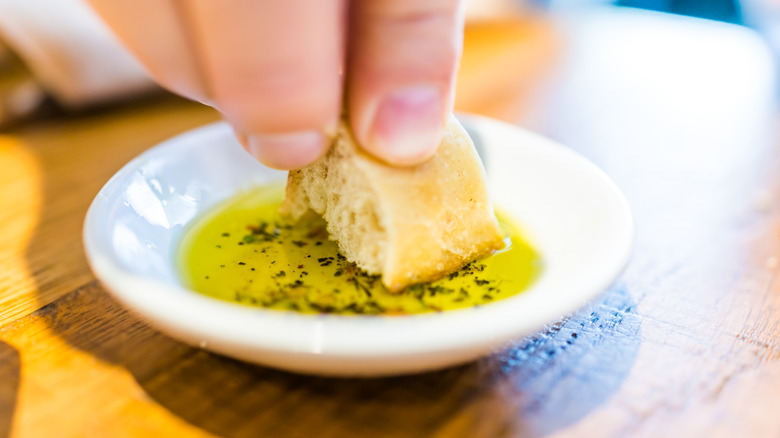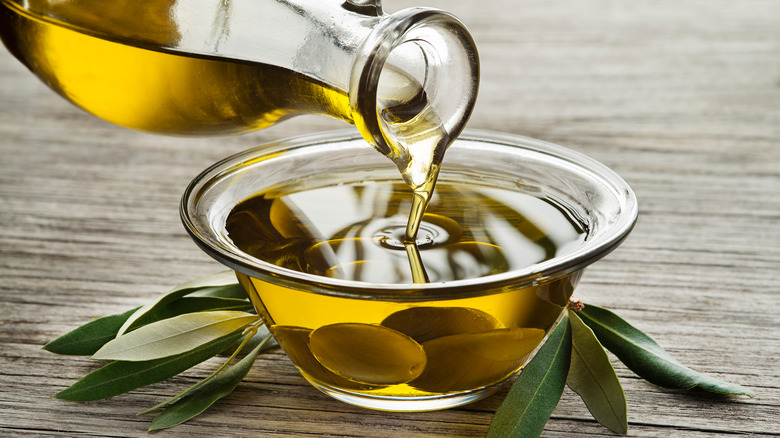What Makes The Bread Dipping Oil At Restaurants So Delicious
It's always amazing that in a world filled with great restaurants with skilled chefs and fantastic recipes, it's often some simple dipping oil for bread that gets people really excited. The question of why food from restaurants is so much better than what we can make at home is always too complex to answer easily, but for most dishes, the skills of professional cooks is the most obvious difference. That's what makes good dipping oil so befuddling to people. It's just oil poured into a nice bowl with some bread; how could it be so much better than doing the same thing at home? Well, it comes down to two simple things: they may use better recipes to infuse their dipping oil with, but most importantly, they are just using fresher, higher-quality oil.
When we think of dipping oil for bread, we are usually dealing with olive oil, and few ingredients are subject to a wider range in quality than that Mediterranean staple. Olive oil's complex supply chain means it can potentially be mislabeled, low quality, or doctored with ingredients like cheaper, less flavorful oils. Restaurants, on the other hand, are usually looking for the highest quality ingredients and aren't going to settle for the same stuff you get off the shelf. The EVOO restaurants will use is complex and flavorful enough that it can serve as a condiment all its own, which is why when it's served plain or used to make a pesto, it's so unbelievably good.
Find a high quality extra-virgin olive oil for restaurant quality bread dipping
The secret to getting restaurant-quality olive oil for dipping bread is to learn about labeling. First, stick with extra-virgin olive oil. You also want to find bottles that list the "harvest date," or "pressed on," for the olives, not just the use-by date, as that level of transparency is a good sign your olive oil is as fresh as possible, and likely hasn't been cut with other oils. Labels from independent quality organizations like the California Olive Oil Council are another good sign. Finally, make sure you get a bottle that hasn't been on the shelf for more than 18 months, and try to use it within 60 days of opening it.
Once you have some good olive oil you can also mimic restaurant dipping oils by infusing your oil with extra flavor from herbs and spices. Dried herbs like oregano, rosemary, and basil are the most popular and lend a nice brightness to olive oil without changing the taste too much. To infuse olive oil, just heat your oil in a pan over low to medium-low heat, add your spice mix, and lightly simmer for 20 minutes. Then, let it cool to room temperature and transfer to a non-reactive bottle for storage. That extra hit of flavor may be just what you are looking for to recreate your favorite bread dipping oil at home.

